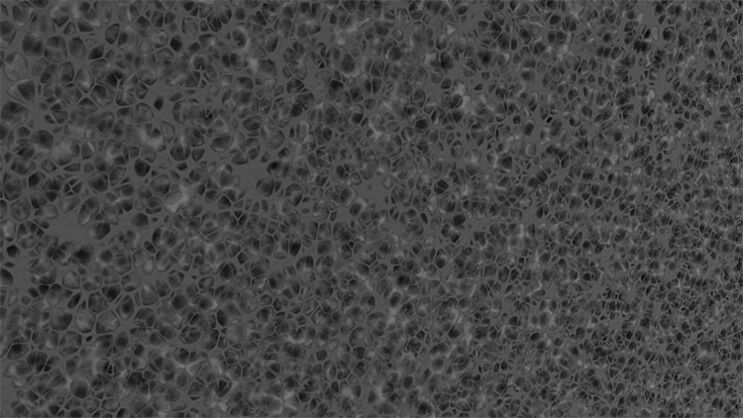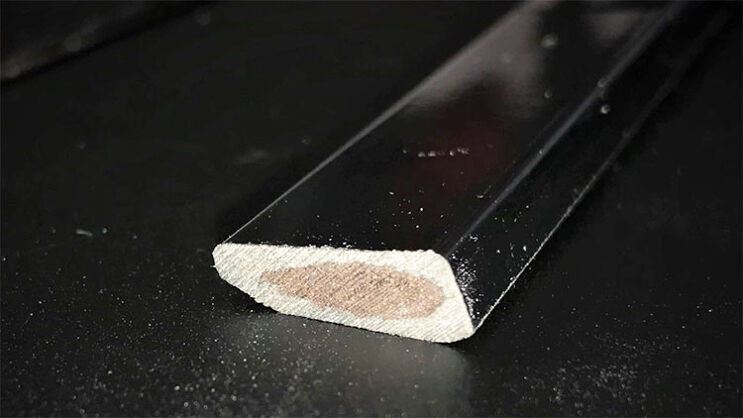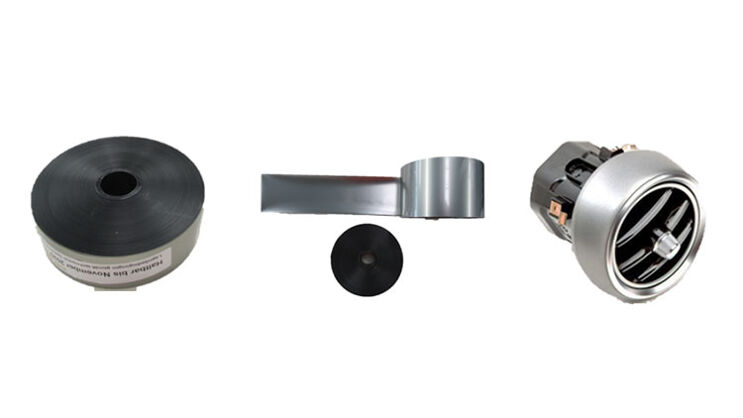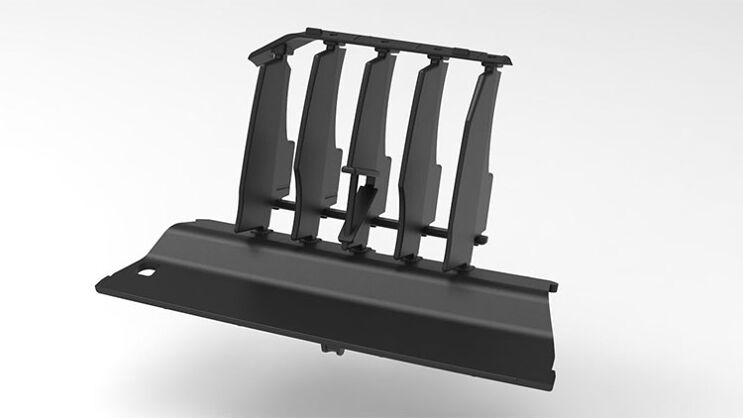
Lamellas in ventilation nozzles can be exposed to greater forces, e.g. due to bending loads. In order to be able to reliably reproduce such high loads, fischer Automotive also uses sandwich injection moulding in special applications. In this process, at least two plastics are injected at the same time. Sandwich injection moulding is a subtype of multi-component injection moulding. Monosandwich parts have a continuous outer skin and a core of one or two different thermoplastics. The core and the outer skin are bonded together. This results in several advantages:
Optical components with high-quality surfaces and simultaneously high rigidity due to reinforced cores. In addition, this injection molding technology allows the use of less expensive core material, for example recycled material.

In the refinement of interior components, a chrome-like appearance is currently in great demand due to its high-quality appearance. To avoid the disadvantages of classic chrome plating, fischer Automotive has introduced the hot stamping process for refining air vents and other interior components. In this process, an embossing foil with chrome look is applied to the component to be upgraded in a hot stamping process. This is a cost-effective and sustainable method for refining plastic components.

Als Anbieter von Interieurbauteilen beschäftigt sich fischer Automotive natürlich auch mit Folientechnologien. Beim In Mould Labeling – kurz IML – werden Dekor- und/oder Funktionsfolien hinter- oder vorderspritzt.
Dabei übernimmt die Folie den dekorativen Part, z.B. durch Muster oder aufgebrachter Maserung, während durch den eigentlichen Spritzprozess dem Bauteil eine Strukturfestigkeit verliehen wird. fischer Automotive verwendet dieses Verfahren u.a. auch um Rollos für Ablagefächer zu fertigen.

For particularly high-volume models and for parts with a high risk of confusion in a manual assembly process, the In-Mould-Assembly process is recommended. In this process, part of the assembly process is transferred directly into the mold and automated. With in-mould assembly, injection moulding and the assembly of several individual parts are carried out in a 2K mould.
The advantages of this process are a high degree of repeat accuracy in production and assembly as well as savings in subsequent assembly processes. In addition, a large number of material combinations are possible with In-Mould-Assembly.
